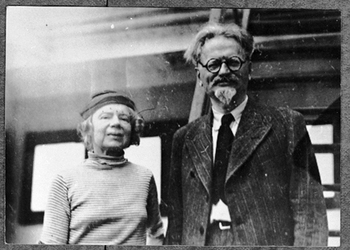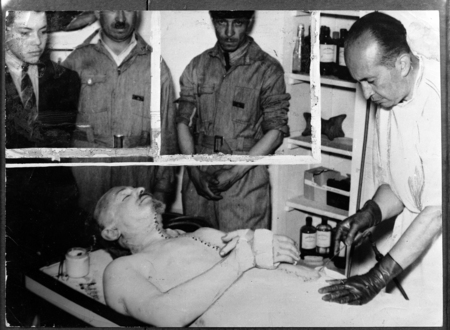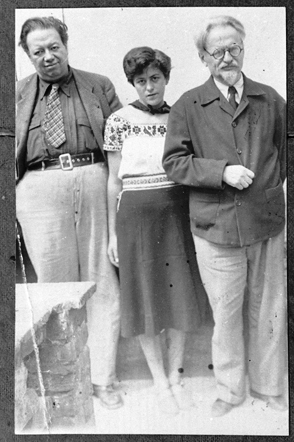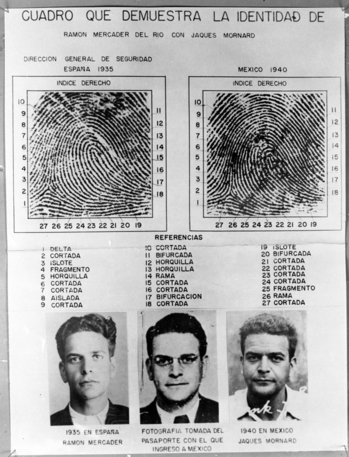Born in New York City, George Sherman (1908-1991) moved to Hollywood as a young man and by the age of twenty-nine was directing his own films, specializing in Westerns. In 1958 Sherman was in Mexico, shooting The Last of the Fast Guns, when a journalist named Myron Gold offered him an introduction to Natalie Trotsky (1882-1962), the widow of Leon Trotsky (1879-1940).
The Trotskys were forced to leave Russia in 1929 but thanks to the help of Frida Kahlo (1907-1954) and Diego Rivera (1886-1957), they were given political asylum in Mexico and settled in Coyoacán, a borough of Mexico City.
Natalie Trotsky told Sherman the terrible history of her husband’s assassination in the summer of 1940, how he had been attacked in their home and stabbed with an ice axe, how she had waited fifteen hours while doctors tried to save him, and how her husband finally died on August 21.
Sherman told her that he wanted to make a movie about this and about the affair between her husband’s young Brooklyn-born secretary Sylvia Ageloff and Ramón Mercader (1913-1978, also known as Jacques Mornard, also known as Frank Jackson), who became Trotsky’s paid assassin.
Natalie Trotsky shared all her records with Sherman included her copies of unpublished police photographs of Mercader’s capture and Trotsky’s autopsy. Sherman took all this back to Hollywood, wrote a treatment for a full-length film and began raising money.
Louella Parsons’s April 11, 1960 newspaper column announced the project noting that Eli Wallach was set to play Trotsky and Richard Basehart was almost confirmed as the young reporter covering the murder. Perhaps someone could ask Mr. Wallach about this?
Although the film was never made, Sherman’s wife, actress Cleo Ronson Sherman (1925-2011) held on to the material after her husband’s death, hoping it might still find a producer. A few years ago, she passed it on to a young filmmaker who brought the photographs and negative to the Graphic Arts Collection at Princeton University, where they will soon be available for research.
See also: Leon Trotsky (1879-1940), What is a peace program? Published by the Bureau of International Propaganda attached to the Commissariat for Foreign Affairs of the Provisional Workmen’s and Peasant’s Government of the Russian Republic (Petrograd [Printed by “Herold”] 1918). (Ex) 14094.28.914
Here is a home movie of the Trotskys with Kahlo and Rivera in Mexico City.





